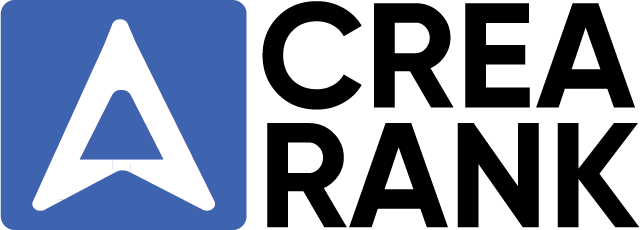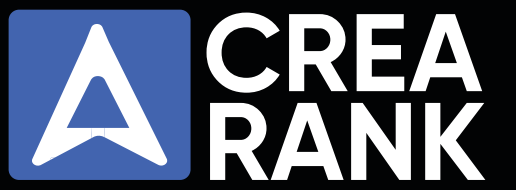Glossary of Web Design: Master Every Term in Web Design
Seeking clarity on web design terminology? Look no further than our comprehensive web design glossary! Explore the essential web design terms frequently utilized by developers and designers, ensuring you stay informed and engaged in discussions about your website. Dive in now to enhance your understanding!
In the realm of web design, akin to numerous other industries, many specialized terms exist. For newcomers, navigating through web design jargon can be daunting, given the abundance of terminology covering various aspects of the discipline.
Familiarizing yourself with design terminology serves multiple purposes: it facilitates comprehension of the design process, enables effective communication with web designers, and empowers you to enhance your design proficiency over time.
Below is a comprehensive web design glossary to augment your design acumen. It encompasses a selection of standard web design terms accompanied by clear explanations. Delve into the glossary to expand your knowledge, and don’t forget to subscribe to our email newsletter for further invaluable insights into web design!
Embarking on exploring this web design glossary can be daunting if you’re unfamiliar with the terminology. To grasp the intricacies of the design process, it’s imperative to acquaint yourself with these terms. Here, we’ll elucidate some of the most prevalent pieces of web design jargon.
A
Accessibility:
Ensuring that your website is accessible involves adhering to guidelines that accommodate users with disabilities. This may entail enlarging icons or font sizes to enhance readability. Improving accessibility can encompass various strategies, such as striving for ADA compliance with the assistance of a consultant.
B
B2B Web Design:
B2B web design entails crafting a website tailored for your B2B company. It encompasses user interface design and visual aesthetics, shaping how users engage with and perceive your site.
B2C Web Design:
B2C web design involves configuring and stylizing your website for business-to-consumer transactions. It encompasses navigation menus, graphical elements, and color schemes.
C
Cascading Style Sheets (CSS):
CSS is a style sheet language used to define the presentation and layout of HTML documents. It complements HTML by specifying attributes like color, font, and positioning, streamlining the web development process.
E
Ecommerce Web Design:
Ecommerce web design encompasses a website’s visual and functional aspects geared towards facilitating online transactions for buying or selling goods and services. It influences both the usability and attractiveness of the site.
Enterprise Web Design:
Enterprise web design focuses on optimizing the appearance and functionality of a website to enhance user experience and drive traffic. It caters to the unique needs and scale of enterprise-level businesses.
H
Hypertext Markup Language (HTML):
HTML is a markup language used to create the structure of web pages. It defines the elements and content of a webpage, instructing web browsers on how to render and display the information to users.
P
Prototypes:
Prototypes serve as mock-ups or models of a website, application, or product, allowing users to test its functionality and usability before its official launch. They are instrumental in identifying design flaws, gathering feedback, and refining the user experience.
Q
Quantitative and Qualitative Research:
Quantitative research involves analyzing numerical data to understand user engagement and behavior on a website. Qualitative research, on the other hand, delves into user preferences and attitudes through observations, interviews, and usability testing, providing valuable insights for design improvements.
R
Responsive design or layout:
Ensuring a responsive design is integral to any website.
Responsive design ensures that your website’s content, images, videos, menus, and forms seamlessly adapt to mobile devices, desktops, and tablets. It aims to provide a consistent and user-friendly experience regardless of the device used.
Given that over 50% of website traffic originates from mobile devices, having an adaptable website across devices is imperative!
S
Style guide or brand guide:
A style guide is a comprehensive document outlining the standards and guidelines for maintaining consistency across various online platforms. It delineates your brand identity by specifying elements such as font styles, color palettes, layout preferences, and tone of copy to assist teams in ensuring brand coherence.
Style guides prove invaluable during the initial stages of web design projects, offering clear directives on how, when, and why designers should implement different elements (e.g., buttons, images, or videos). It’s advisable to understand your target audience thoroughly before embarking on creating a style guide.
- Critical components of style guides may include:
- Guidelines for headers, titles, fonts, numbers, and symbols
- Company-specific spelling requirements (e.g., trademark symbols)
- Word banks for preferred vocabulary across all content mediums
- Voice and tone guidelines (e.g., playful, authoritative, etc.)
- Color schemes for images, backgrounds, fonts, etc.
If you’re in the process of crafting a style guide, consider referencing existing examples for inspiration!
U
User experience (UX):
User experience (UX) pertains to how users perceive and interact with a website. Essential considerations regarding UX include:
- How do visitors feel when navigating your website?
- Is the website user-friendly and easy to navigate?
- Does it offer convenience to users?
Addressing these questions aids in evaluating the effectiveness of your website’s layout in facilitating users’ journey toward their intended goals.
As user behaviors evolve continuously, ongoing assessment of user interactions can yield valuable insights. Regular evaluations conducted quarterly can offer substantial optimization opportunities. Additional factors influencing user experience include:
- Ease of use
- Accessibility
- Credibility
- Value proposition
Ensure your website delivers a timeless user experience to retain visitors and customers!
UX design:
UX design, short for “user experience” design, encompasses creating an intuitive, relevant, and user-friendly experience for website visitors.
User interface design (UI):
User interface (UI) design pertains to the visual aspects and interactions of elements on a website, such as colors, layouts, typography, buttons, effects, etc. UI design adheres to principles to ensure websites are intuitive, straightforward, and easy to navigate.
Usability testing:
Usability testing examines how users interact with your website, services, or products.
Observing user behavior yields valuable insights into their preferences and sentiments. These insights can be leveraged to optimize their experience with your brand.
Before launching new products, services, or websites, conducting usability tests helps identify user preferences and areas for improvement. Various methods of usability testing include:
- Guerilla testing: Conducted in public settings to gauge user reactions to products or services.
- Moderated testing: Carried out in controlled environments, facilitating live product feedback.
- Live interviews or questionnaires: Enable gathering candid feedback from a live audience.
Online usability tests provide ongoing insights. Heatmaps and user tests offer visibility into user engagement, enabling enhancements to capture more leads.
W
Web design:
Web design encompasses the creation of websites or web pages accessible over the Internet. From the underlying HTML structure to textual fonts and visual elements, web design covers all processes in rendering your website’s front end visually appealing and functional.
Explore more web design terms:
With our website design glossary at your disposal, discussions regarding your website and its design need not remain obscure.
Here, we’ve compiled a repository of resources covering additional web design terminology. Dive in now!
- Graphic Design Terminology
- Web Design Terminology
- Web-Safe Fonts
- Web Development Glossary

